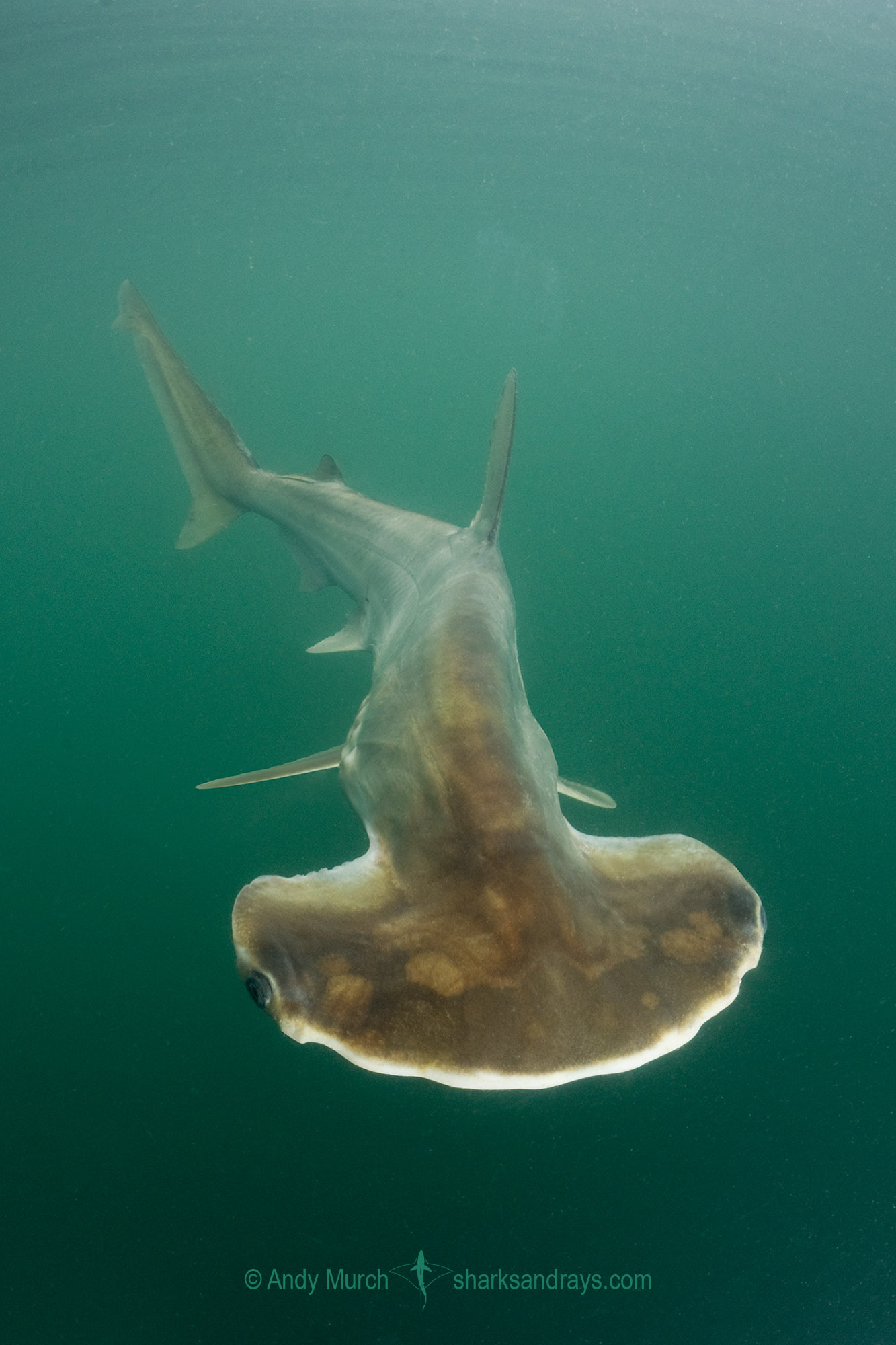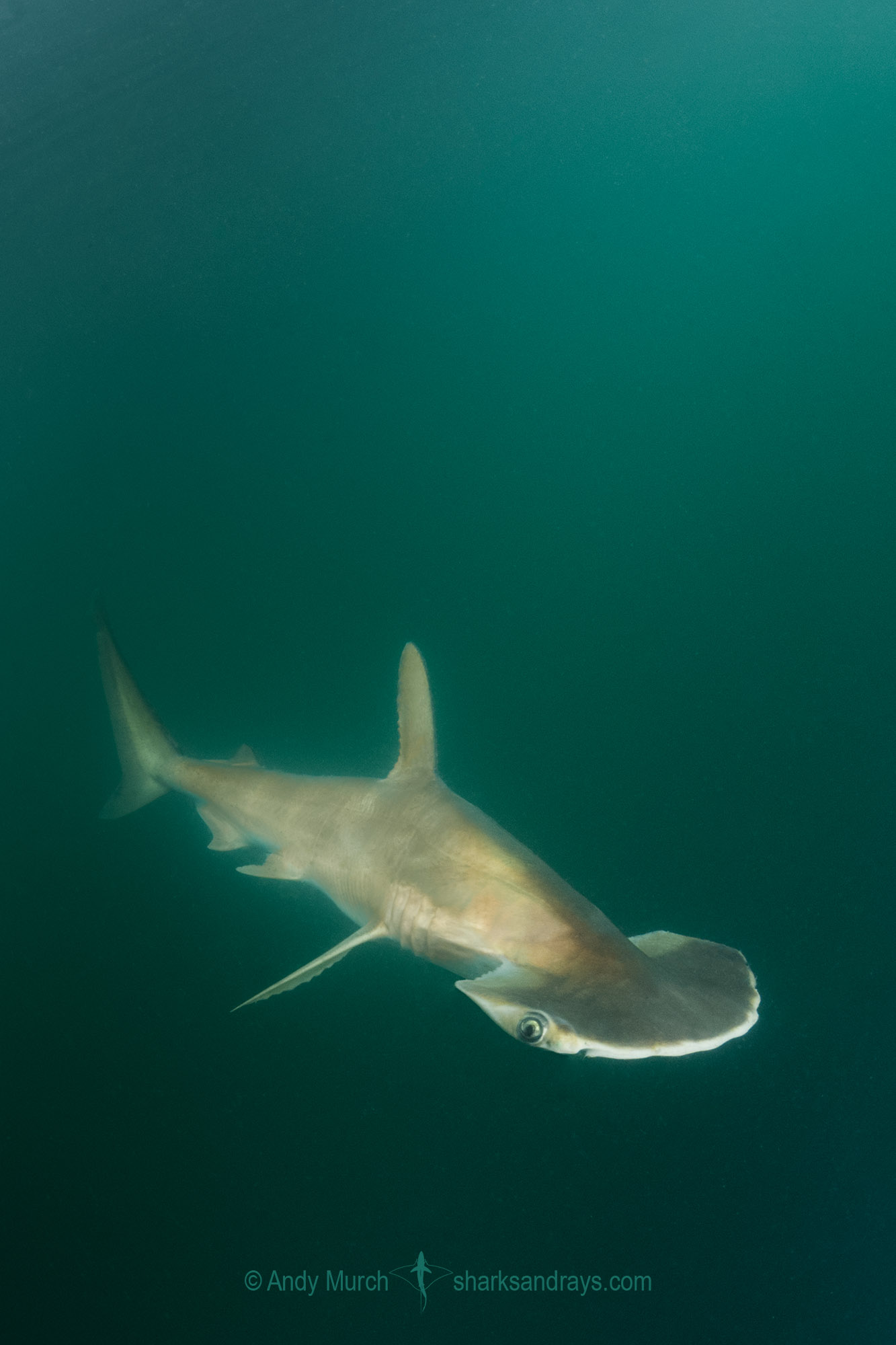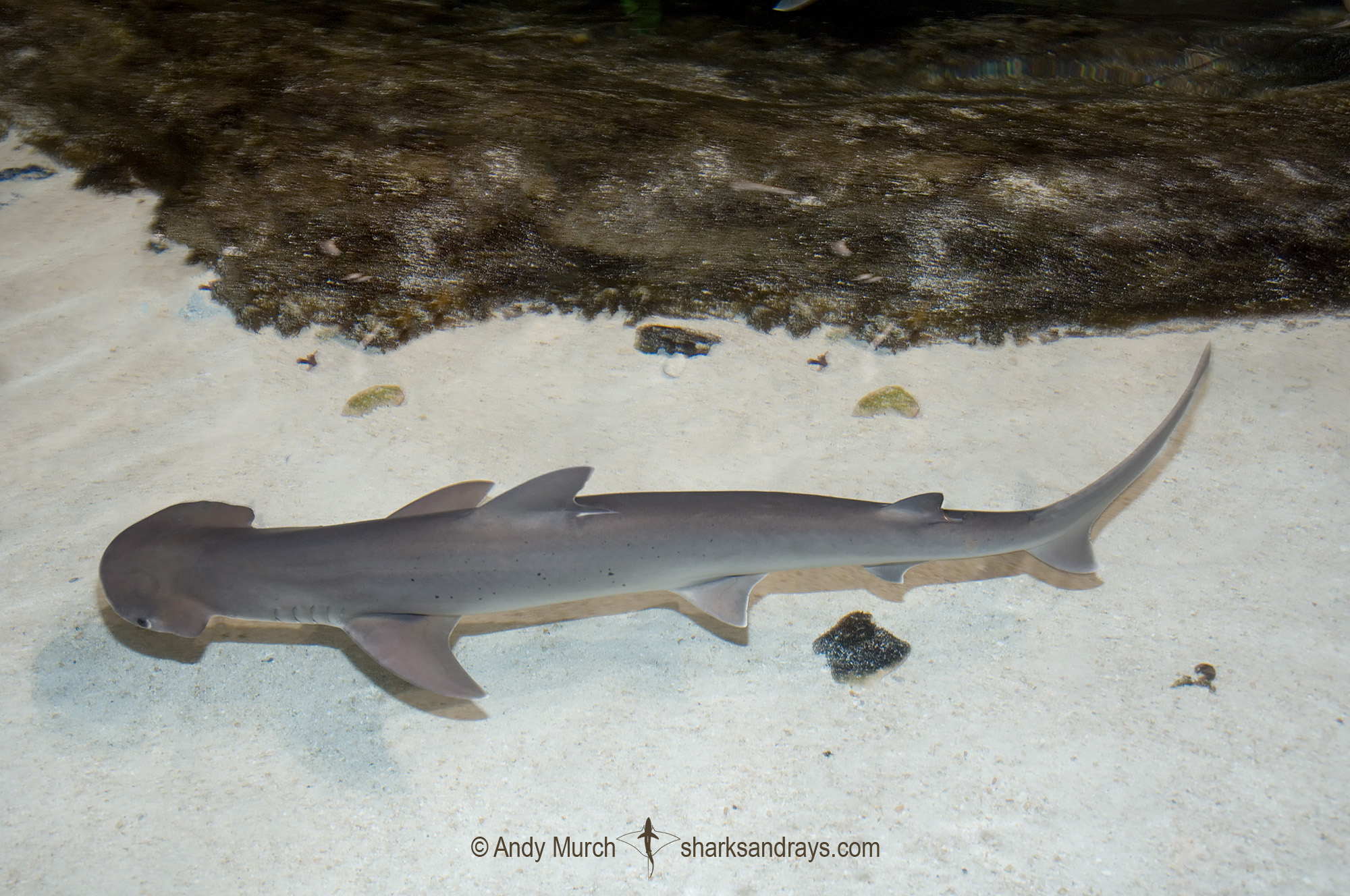Common name(s)
Scoophead Shark, Scoophead Hammerhead.
Binomial
Sphyrna media.
Synonyms
Sphyrna nana.
Identification
Hammer rounded with very subtle medial and central indentations. No inner-narial grooves. Broadly arched mouth is roughly 1/3rd of the hammer width. First dorsal fin high and falcate, second much lower. Free rear tip of first dorsal fin level with origin of pelvic fins. Anal fin long without significant tapering. Dorsal coloration grey-brown to golden-brown. Ventral surface pale. Fins mostly plain with slightly dusky tips.
Size
Maximum length approximately 150cm but adult males/females are more commonly 100cm/130cm respectively. Average size at birth is probably around 30cm.
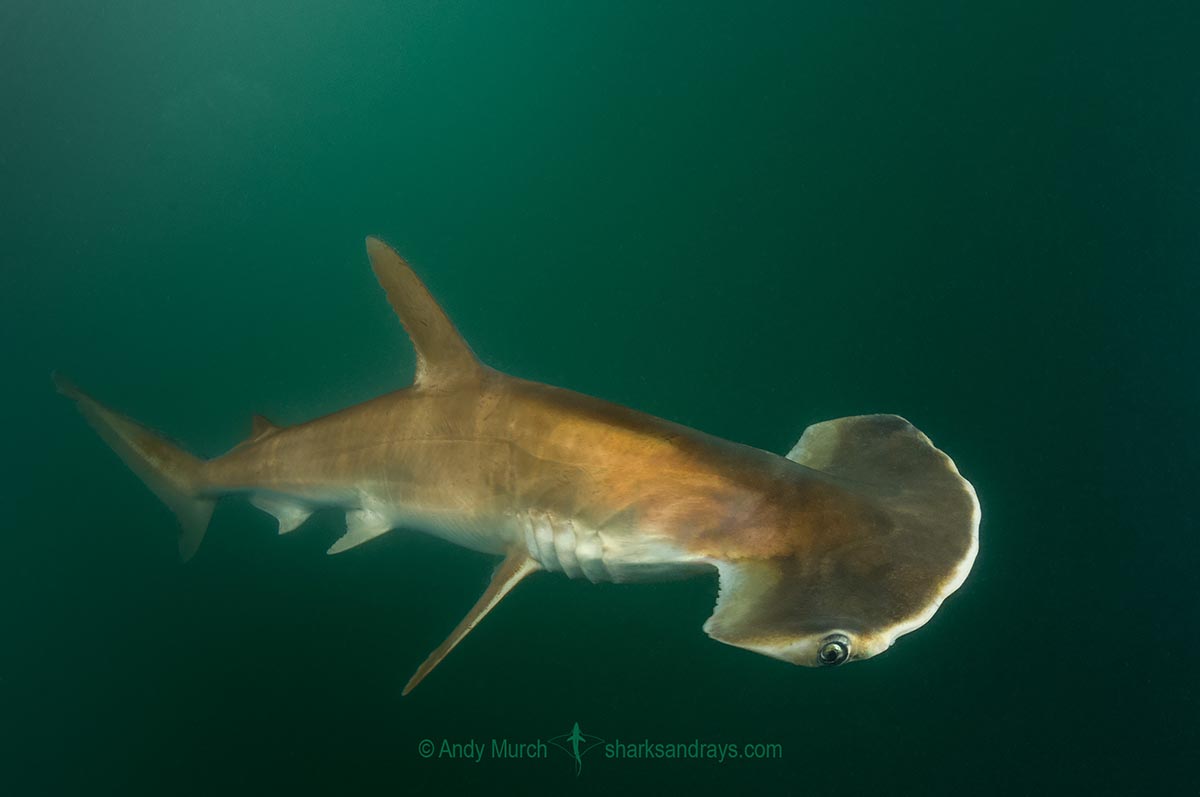
Conservation Status
CRITICALLY ENDANGERED
The scoophead shark is captured in commercial and artisanal longlines and gillnets and possibly trawl fisheries. In most areas, these fisheries are unmanaged. Range contractions in the Pacific and the Atlantic have occurred. This species is especially rare in the Pacific. Scoopheads are no longer present in the Sea of Cortez and rarely recorded elsewhere in Pacific Mexico or Central and South America. In the Atlantic, it has become rare off Colombia and Venezuela, where it is subjected to intense fishing pressure. The population in the Guianas and northern Brazil is likely to be similar. There are no recent records from southern Brazil.
Considered abundant in the 1970s, the scoophead shark has since undergone a population reduction of >80%.
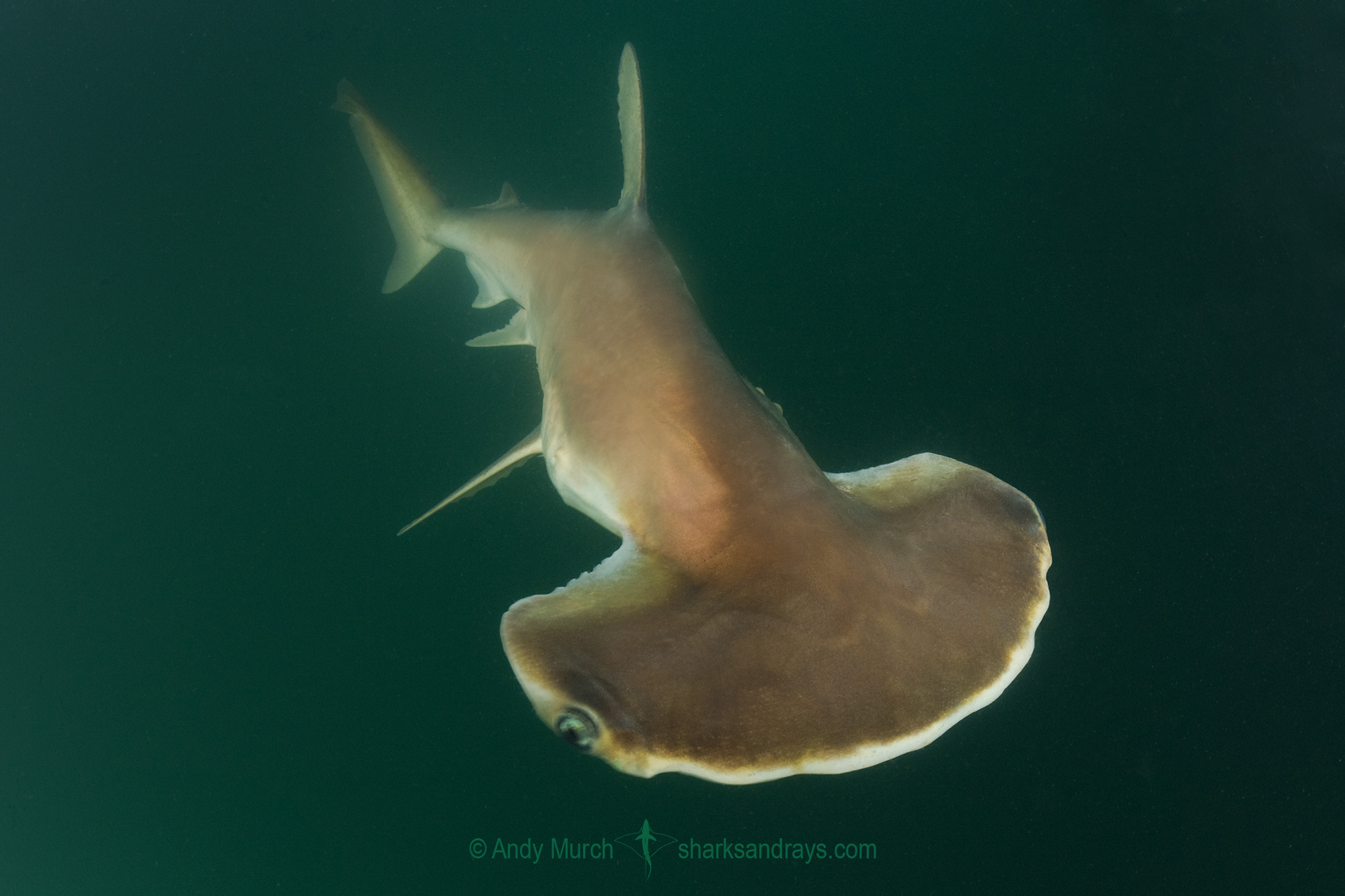
Habitat
Inshore turbid bays, estuaries and rivers as well as continental shelves.
Distribution
Present on both coasts of Central and South America. In the Atlantic, the scoophead ranges from Panama to southern Brazil including some Caribbean Islands. And in the Eastern Pacific from the Gulf of California to Peru and probably Ecuador.
The species exact range is difficult to determine due to its similarity to two other small hammerheads that share its range; the small-eye/golden hammerhead and the scalloped bonnethead.
Reproduction
A viviparous species with yolk-sac placenta. Litter size 1-8 (ref. Jose Castro).
Diet
Diet consists mainly of bony and cartilaginous fishes, squid, octopus and shrimps.
Behavior
Unknown.
Reaction to divers
No known records of sightings by divers. Due to its small size, the scoophead shark is probably a very shy species which accounts for the lack of sightings. Also it appears to prefer turbid environments where divers are unlikely to venture.
Diving logistics
Although this species is not seen by divers, it does occur in shallow water. Anyone wishing to encounter a scoophead shark should consider chumming with appropriate bait in the Bay of Panama.
When I encountered this species, I based myself in Chepo in eastern Panama and accompanied fishermen that were working near the mouth of the Chepo River.
Similar species
Bonnethead Shark distinguished by very narrow rounded hammer without any noticeable scalloping or indentations.
Scalloped Bonnethead Very similar but more slender overall. Posterior margin of anal fin almost straight (less falcate). Confined to the eastern Pacific.
Smalleye/Golden Hammerhead Distinguished by a more pronounced medial notch in the hammer, a larger lower caudal lobe, and an overall golden hue.

